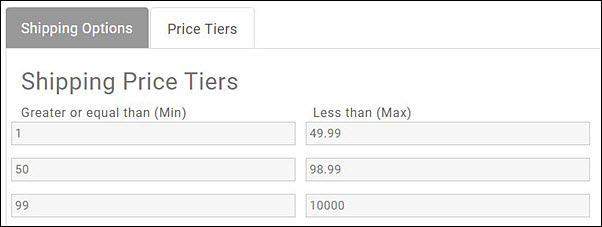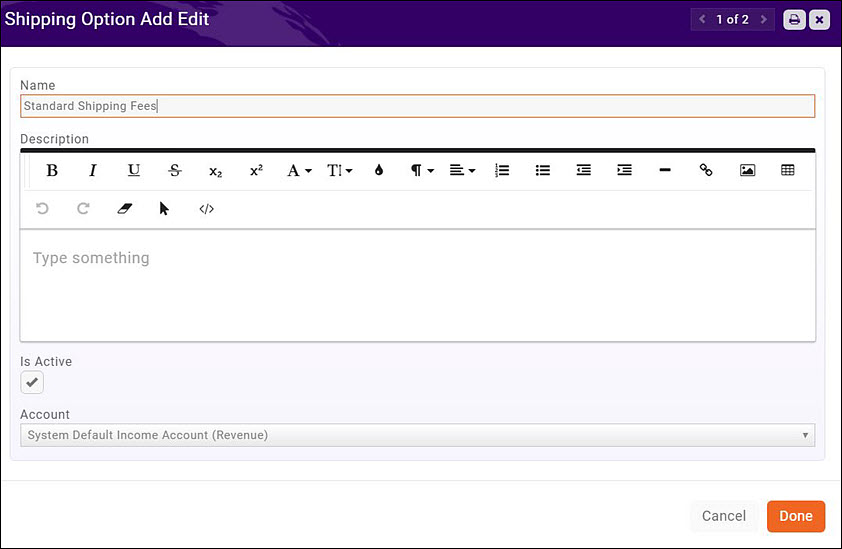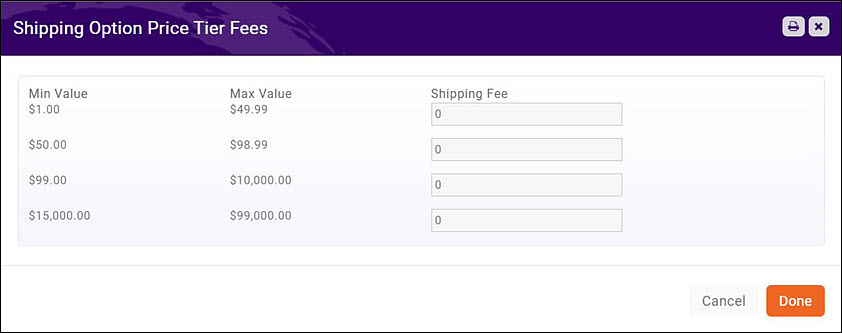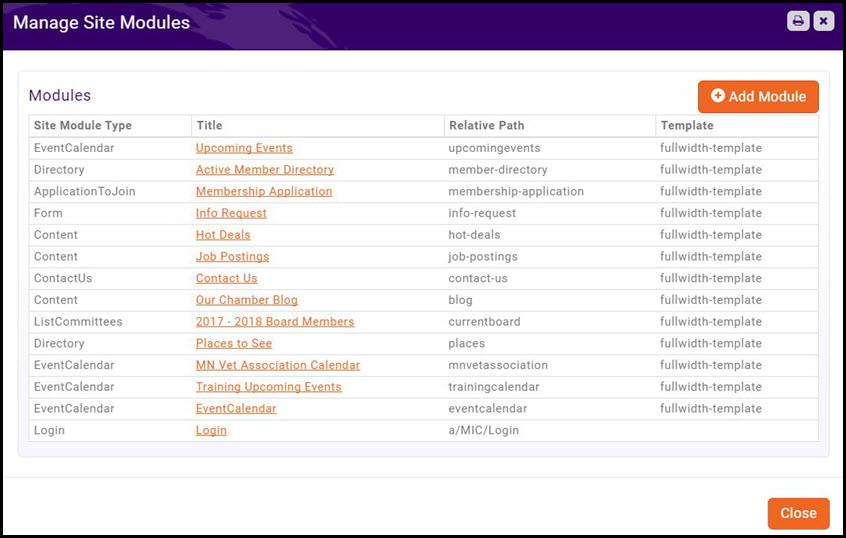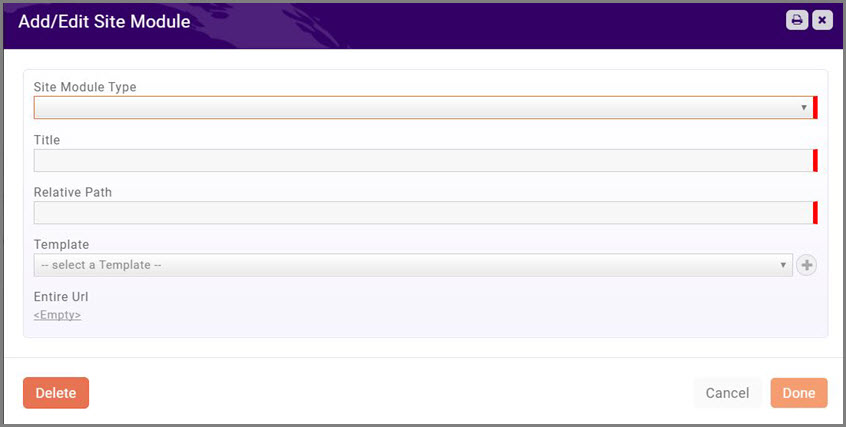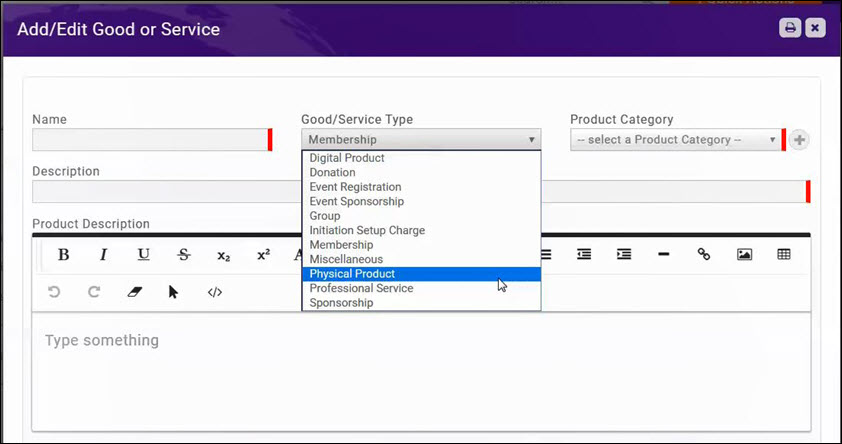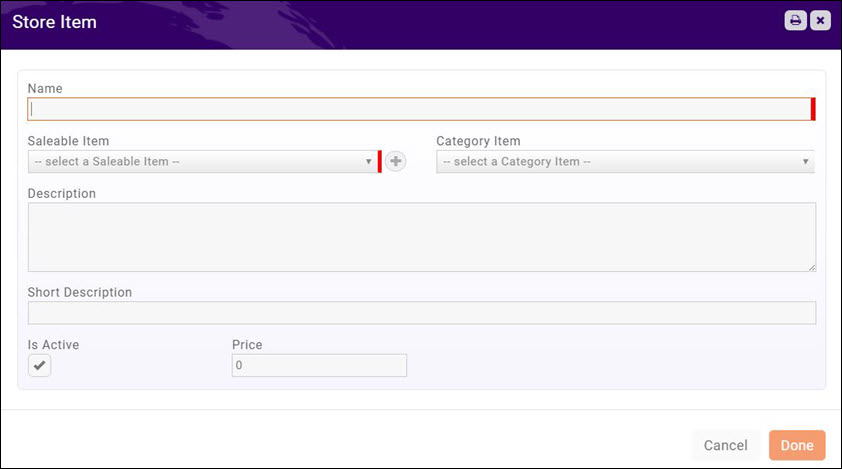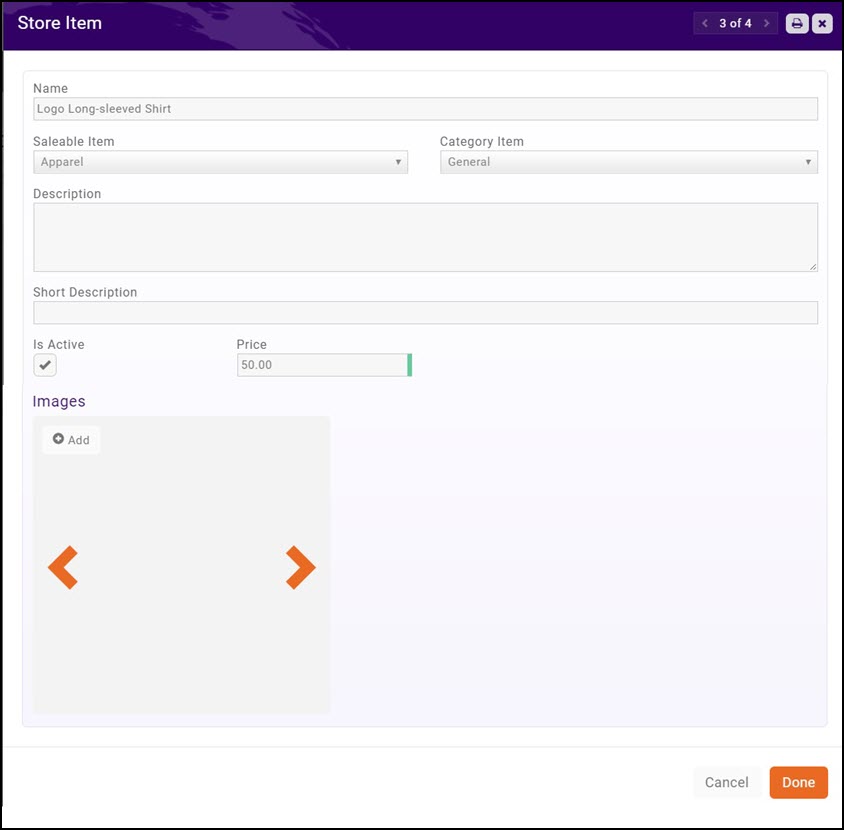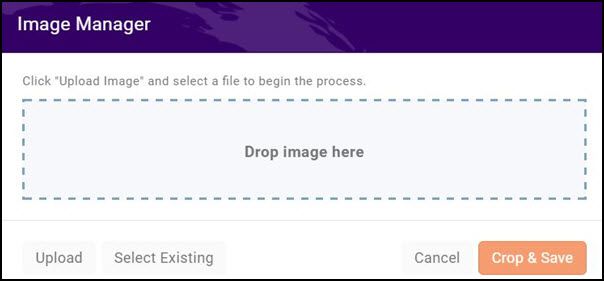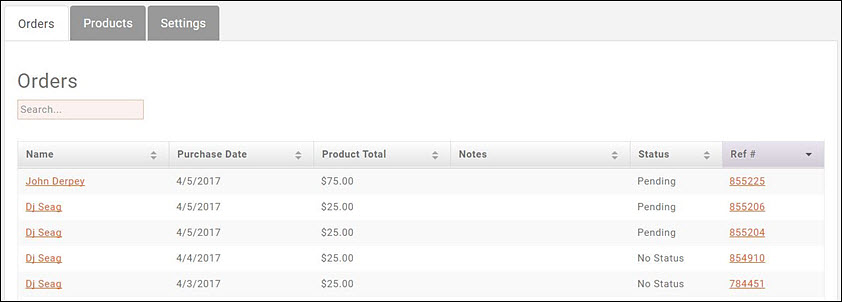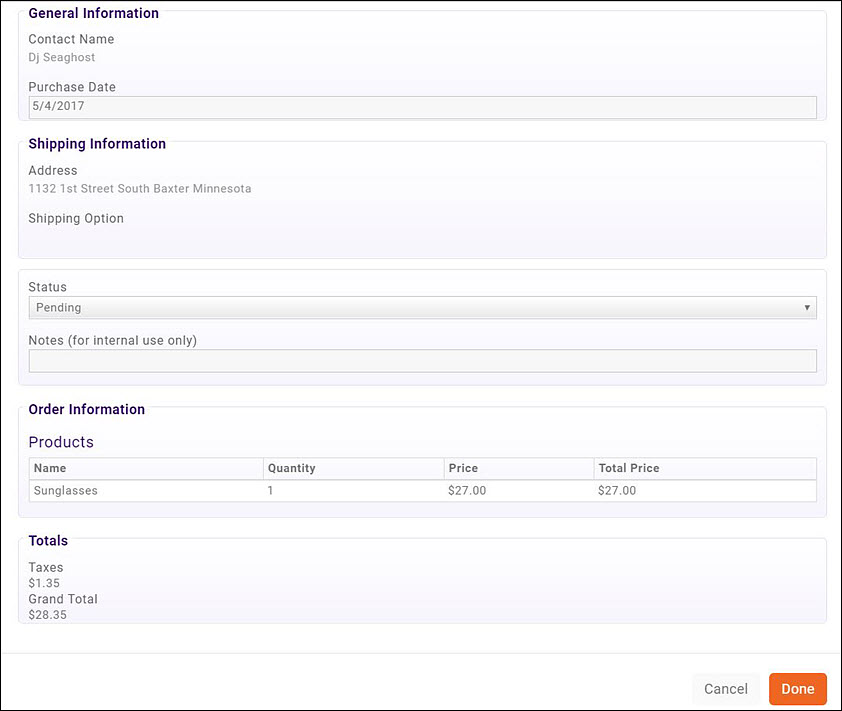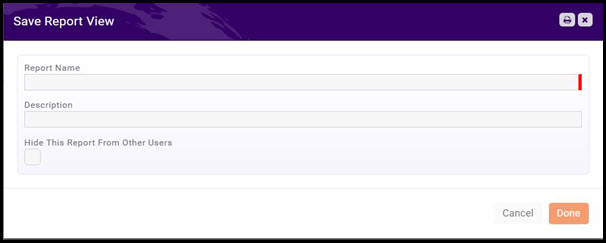Store
Setup Your Store
Set-up Shipping Options
The Shipping functions allow you to set the shipping fees associated to a sale. First step is to setup pricing tiers, second is to associate those tiers to a shipping option. Access the Shipping Options via Setup > Finance > Shipping.
Set Price Tiers
The Price Tiers screen is where you can set up your shipping price thresholds. Each item in the Price Tier is a price range with a minimum and a maximum value.
- Click Setup in the Navigation Panel.
- Click Shipping in the Finance section.
- Click the Price Tiers tab.
- To add a price tier, click the + button.
- Greater or equal than (Min) - Enter the minimum purchase dollar amount that will qualify for a designated shipping price.
- Less than (Max) - Enter the maximum purchase dollar amount that will qualify for a designated shipping price.
- Repeat the steps above to add all price tiers.
- Click Save.
Set Shipping Options
On the Shipping Options tab you will create a set of shipping options, associate the price tiers, and assign the shipping cost for each tier. You may have multiple shipping option sets, for example you may have options for ground shipping, air shipping, pick up in store and so on. All of the shipping option sets that you create will automatically be available in your store at checkout.
- Click the Shipping Options tab.
- Click the Add button.
- Enter a Name for the Shipping Option set.
- Enter a Description of the set.
- Select the Is Active check-box to be able to select this set.
- Account - Select the account to which the shipping revenue should assigned.
- Click Done.
- Click the Setup Shipping Options Tiers icon

- Enter the Shipping Fee you wish to associate to each tier.
- Click Done.
Set Store General Settings
- Click Store in the Navigation Panel.
- Click the Settings tab.
- The Entire Url will be initially blank. Once you have created the page to be added to your website, the URL will be populated.
- Store Description - The Store Description will be displayed at the top of your store page.
- Click Done.
Adding the Store to your Web-site
To add the store to your web-site, you will first configure the web-site page through the back office. Once the page has been configured you will add it to your web-site.
Back-office Setup Store page setup
- Click Setup.
- Click Sites in the Website/Content Management System section.
- Click the Actions button for your website
- Click Modules/Pages.
- Click the Add Module button.
- Configure the following:
- Site Module Type: Select Store from the drop-down list.
- Enter the Title for the Module - this title will be displayed on your web-site
- Enter the Relative Path to your store. The relative path is the final portion of the URL. The system will automatically build the full path and display in the Entire URL setting once you have save the page.
- Select the Template you wish to use for your store from the drop-down list.
- Click Done.
- In the list of modules displayed, click the hyper-link for the store page you just created. Copy the URL for the store.
Add Page to Web-site
- Launch your web-site.
- In Edit mode, click the Dashboard icon
 in the upper left corner.
in the upper left corner. - Click Menus.
- Click the drop-down arrow next to Custom Links.
- Paste the URL to your store in the URL text box.
- Enter the name for this menu item in the Link Text text-box.
- Click Add to Menu. You new page menu item will be added to the menu structure shown to the right. You can re-position where it will be in the menu structure by dragging and moving it to the desired location.
- Click Save Menu.
Setup Goods/Services Items for Store Products
Goods and Services allow you to define the fee items associated to the products you will sell in your store.
- Click Setup in the Navigation panel.
- Click Goods/Services in the Services, Products and Commerce section. A list of Goods/Services currently configured in your system will be displayed.
- Click the New button.
- On the Add/Edit Good or Service screen, configure the following:
- Name - Provide a name for the good/service. This will be displayed when you are selecting goods or services.
- Good/Service Type - Select a type from the drop-down list. Type will drive the goods/service items that may be selected when setting up the products in your store. Physical Product and Digital Product are store items.
- Product Category - Select a product category from the drop-down list. Product Category is used for filtering and reporting. To add a new product category, click the + sign.
- Description - Enter a description of the good/service. This description is displayed in the Goods/Services list.
- Product Description - The Product Description is displayed on the web when this good/service is used. The standard word processing for formatting your text (i.e. bolding, italiczing, etc.) are available. You may also add links and images to the description.
- Price Period - Select one-time for store products.
- Default Price - Enter a default price for this good/service. This price may be over-ridden when you are assigning the good/service.
- Default Quantity - Enter the default quantity for this good/service. This would be used if a minimum purchase for this good/service is required, and may be overridden when you are assigning the good/service.
- Accounting Type - Select either Cash or Accrual.
- Revenue Recognition Type - Select how you will recognize the revenue for this good/service.
- Income Account - Select the income account for this good/service. The drop-down list will be populated with the income accounts currently configured in your Chart of Accounts. You may add a new account by clicking the + sign. If you are unsure as to which account should be selected you will want to check with your accountant, as this will affect your financial statements.
- Receivables Account - Select the accounts receivable account for this good/service.The drop-down list will be populated with the receivables account configured in your Chart of Accounts.
- Deferred Income Account - Select the deferred income account for this good/service. The drop-down list will be populated with the deferred income accounts configured in you Chart of Accounts.
- Deposit Account - Select the deposit account for this good/service. The drop-down list will be populated with the deposit accounts configured in your Chart of Accounts.
- Default Revenue Recognition Months - If the revenue for this good/service will be recognized over a period of time, enter the default number of months over which the revenue will be recognized.
- Product Tax Category - If this good/service is taxable, select the appropriate product tax category. The drop-down list will be populated with tax categories currently configured in your system. If you wish to add a new product tax category, click the + button.
- Tax Set - If this good/service is taxable, select the appropriate tax set.
- Is Recurring Fee (vs. one-time) - Does not apply to store purchases.
- Invoice Template - Select the invoice template to be used for this good/service.
- Is Active - Select this check-box to activate this good/service. Only Active items may be billed.
- Click Done to save the new good/service.
Add Products to Your Store
- In the Store module, click the Products tab. A list of all products currently setup in your system will be displayed.
- Click the Add button.
- Configure the following for your new product:
- Name - This is the name of the product that will be displayed on the public web-site.
- Saleable Item - Select the good/service fee associated to this product. Good/Services that you have created as Physical Product or Digital Product will be displayed in the drop-down. You can add a new Good/Service by clicking the + button.
- Category Item - Select a category item from the drop-down. Category will allow for reporting and filtering.
- Description - Enter a description of this product. The description will be displayed on your public web-site, when someone clicks on the item.
- Short Description - Enter a short description. The short description will be displayed above the Description when someone clicks on the item on your public web-page.
-
- Is Active - Select this check-box to display this item in your store. If the item is no longer available, you can deselect this option.
- Price - Enter the price of the item.
- Click Done.
Adding Image to your Product
Once you have added a product to the store, you may add an image:
- On the Products tab, click the hyper-link for the product to which you wish to add an image.
- In the Images section, click the Add button.
- Drag and drop the image, or click Upload to browse to the file and upload it.
- If necessary, crop the image.
- Click Crop & Save.
Managing Store Orders
Store Order Notifications
When an order is placed, an automated message will be sent to those staff members who have subscribed to the New Store Order Created notification. Click here for details on setting up notifications.
Reviewing and Fulfilling Orders
All orders placed through your store will be displayed on the Orders tab of the Store module.
To update the status of an order once it has been fulfilled:
- Click into the Purchaser's Name on the Orders tab.
- Select Fulfilled from the Status list. If no selection is made, the order will remain in Pending.
- (Optional) Enter Notes. Notes are for internal use and may be a way to track when an order was completed, or other details.
- Click Done.
Store Reports
Store Product Purchases
The Store Product Purchases report will generate a list of all product sold through your store. This list can be generated for an individual contact, or all contacts. Additionally you can filter the report on specific products and/or specific date ranges.
- Click Reports in the Navigation Panel.
- Select the Store Product Purchases Report.
- Enter desired filtering criteria:
- To view purchases for an individual contact, begin typing the name in the Contact Name text box. If the contact exists in your database, the type ahead functionality will display a list of contacts for you to choose from. If Contact Name is left blank, the report will be generated for all contacts who have made purchases.
- To view purchases in a particular date range, select a predefined date range (i.e. Last Week, Last Quarter, etc.) or select beginning and end dates from the calendars.
- To view purchases for a selected product, begin typing the name of the product in the Product Name text box. If the product exists in your database, the type ahead functionality will display a list of products for you to choose from. If Product Name is left blank, the report will be generated for all products sold.
- You may select additional Criteria / Filters to customize the results of your report.
- Configure the Display Options as needed:
- By default the Fields to Display in the report include: Order Date, Short Description, Quantity, Total Amount, and Contact Name. You may change or add additional fields to your report by clicking into the Fields to Display box.
- The Summarize By option allows you to group together the results of your report. For Example, you might select Contact Name to group the results by contact.
- The Display Mode may be either Detail or Summary. If you have selected a summarize option, detail will show all the transactions whereas summary will show only the total of all transactions.
- Click Run Report.
You can perform the following actions with the report by clicking the down arrow on the Run Report button:
- Export as PDF
- Export as Excel.
- Export Summary as PDF
- Export Summary as Excel
- Email Report
- Add to List - This option will allow you to add the members to an existing list, or create a new list (by clicking the + button on the Add Contacts to list screeen). This can help you in sending emails to this group with reminders.
- Save as New Report - If you want to use this report with the same filtering options in the future, you can save the report.
Store Products
The Store Products report will generate a list of all of your store products, along with the number sold of each item, and the number of orders for each item. The report may be filtered by date range so you can see what you have sold over a period of time, by specific categories, or saleable item.
- Click Reports in the Navigation Panel.
- Select the Store Products report.
- Enter desired filtering criteria:
- To view products in a particular date range, select a predefined date range (i.e. Last Week, Last Quarter, etc.) or select beginning and end dates from the calendars.
- To view a specific product, begin typing the name of the product in the Product Name text box. If the product exists in your database, the type ahead functionality will display a list of products for you to choose from. If Product Name is left blank, the report will be generated for all products.
- To view a specific saleable item, begin typing the name of the item in the Saleable Item text box. If the saleable item exists in your database, the type ahead functionality will display a list of the items for you to choose from. If this field is left blank, the report will be generated for all saleable items.
- You may select additional Criteria / Filters to customize the results of your report.
- Configure the Display Options as needed:
- By default the Fields to Display in the report include: Orders Number, Product Name, Saleable Item, and Total Sold. You may change or add additional fields to your report by clicking into the Fields to Display box.
- The Summarize By option allows you to group together the results of your report. For Example, you might select Product Name to group the results by product.
- The Display Mode may be either Detail or Summary. If you have selected a summarize option, detail will show all the transactions whereas summary will show only the total of all transactions.
- Click Run Report.
You can perform the following actions with the report by clicking the down arrow on the Run Report button:
- Export as PDF
- Export as Excel.
- Export Summary as PDF
- Export Summary as Excel
- Email Report
- Add to List - This option will allow you to add the members to an existing list, or create a new list (by clicking the + button on the Add Contacts to list screeen). This can help you in sending emails to this group with reminders.
- Save as New Report - If you want to use this report with the same filtering options in the future, you can save the report.
